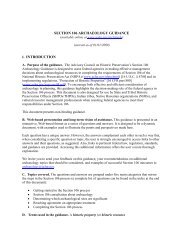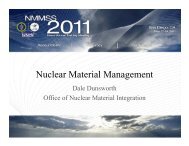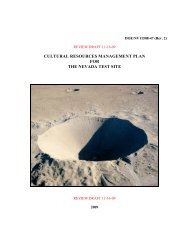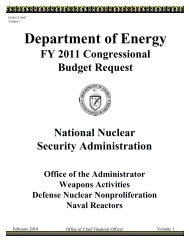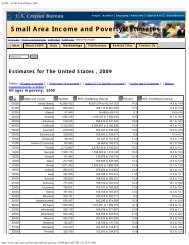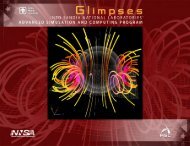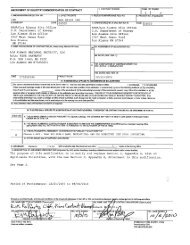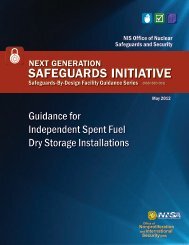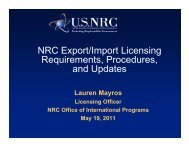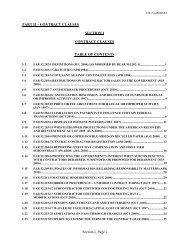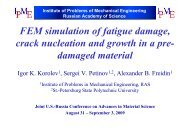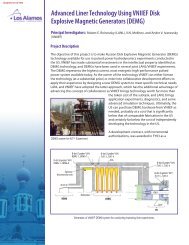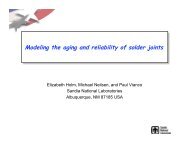ASC Code Strategy - National Nuclear Security Administration
ASC Code Strategy - National Nuclear Security Administration
ASC Code Strategy - National Nuclear Security Administration
Create successful ePaper yourself
Turn your PDF publications into a flip-book with our unique Google optimized e-Paper software.
3.0 <strong>ASC</strong> <strong>National</strong> <strong>Code</strong> <strong>Strategy</strong><br />
As detailed in the introduction, the objectives of the IC program element are designed to realize the vision of<br />
“simulation-enabled complex transformation,” and correspond, in a progressive fashion, to broader spheres of<br />
application, influence, and impact. These objectives are as follows:<br />
• Advance world-leading predictive science, providing the capability to sustain stockpile stewardship without<br />
returning to underground nuclear testing as weapons age and we move further from the test base;<br />
• Enable QMU-based certification, transforming the broader certification process to allow more effective and<br />
selective use of AGEX, certification tests, flight tests, and other tests;<br />
• Catalyze a responsive infrastructure through pervasive simulation across all aspects of the stockpile lifecycle such<br />
as design, certification, manufacturing, SFI resolution, transportation, security, safe dismantlement, outputs and<br />
environments, etc.;<br />
• Enable a broadened national security mission, in which simulation tools extend beyond stockpile stewardship and<br />
enable the next-generation mission of the Complex.<br />
The <strong>ASC</strong> <strong>National</strong> <strong>Code</strong> <strong>Strategy</strong> itself rests on three major strategic components designed to help the national<br />
Program achieve its four objectives, while helping to mitigate the risks associated with future program challenges.<br />
These three major components are as follows:<br />
1. Establish the <strong>National</strong> Simulation Portfolio for Weapons Science and Engineering, and Stockpile Certification;<br />
2. Advance Computational Algorithms to Enable Predictive Simulation and QMU;<br />
3. Broaden the Impact of <strong>ASC</strong> Simulation Capabilities in <strong>National</strong> <strong>Security</strong>.<br />
In the following sections, the three major components of the <strong>ASC</strong> code strategy are presented, with the major steps of<br />
each strategy detailed. In Appendix A, specific targets are laid out over the following six years to guide the program in<br />
the implementation of this strategy.<br />
1. Establish the <strong>National</strong> Simulation Portfolio for Weapons Science and Engineering,<br />
and Stockpile Certification<br />
This first strategic component focuses the Program’s efforts on activities necessary to our mission, while increasing<br />
interdependence and collaboration, to establish a sustainable, predictive capability. Throughout the first 10 years of<br />
the <strong>ASC</strong> Program, the three laboratories have largely focused on developing simulation capabilities based on their<br />
Magnetic islands and drift-kink instability observed<br />
in 3D large-scale fully kinetic VPIC simulations<br />
run on the Roadrunner base system of magnetic<br />
reconnection in electron-positron plasma.<br />
(Los Alamos <strong>National</strong> Laboratory)<br />
7



